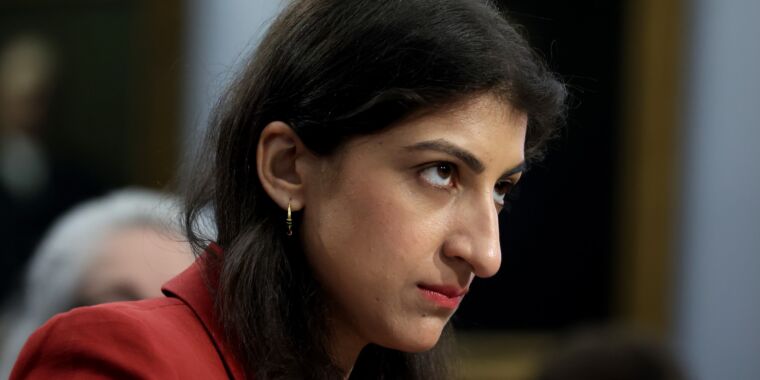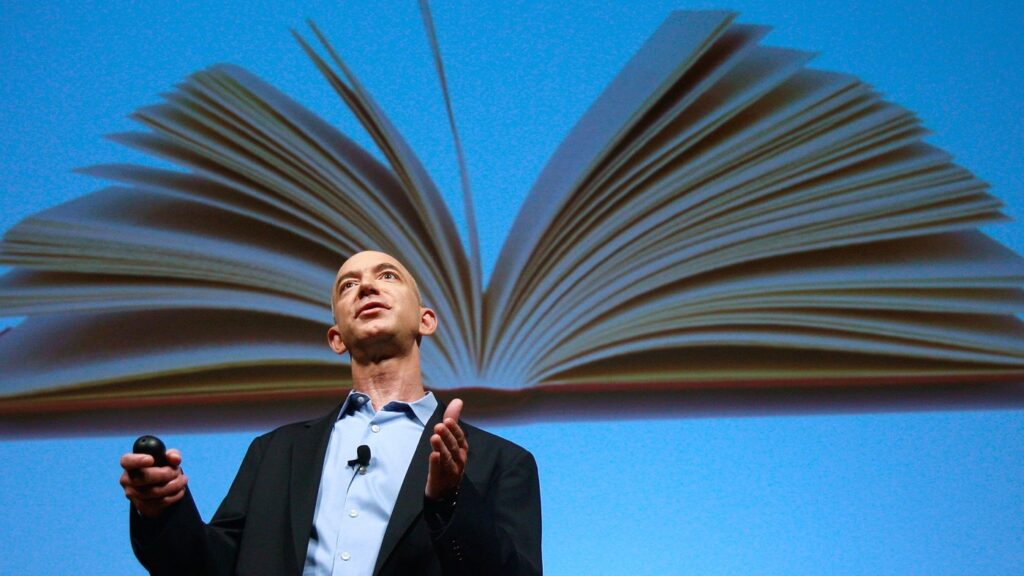When Donald J. Trump became president in 2017, prices had risen roughly 5 percent over the previous four years. If he were to win the race for the White House in 2024, he would be entering office at a time when they are up 20 percent and counting.
That’s a very different economic backdrop for the kind of policies — tariffs and tax cuts — that the Republican front-runner has made central to his campaign.
Mr Trump regularly blames the Biden administration for recent price rises, but inflation has been a global phenomenon since the start of the coronavirus pandemic in 2020. Supply chain problems, changing consumer spending patterns and other related features with pandemic lockdowns and their aftermath clashing with stimulus-driven demand to send costs soaring.
The resulting years of extremely rapid inflation have changed the country’s economic picture in important ways. Businesses are more used to adjusting prices and consumers are more accustomed to these changes than before the pandemic, when costs had been flat for decades. Beyond that, the Federal Reserve has raised interest rates to 5.3 percent in an effort to slow demand and bring the situation under control.
That combination — worried inflation expectations and higher interest rates — could make many of the ideas Mr. Trump is talking about on the campaign trail either riskier or more costly than before, especially at a time when the economy is running at full speed and unemployment is high. low.
Mr Trump is proposing tax cuts that could boost the economy and add to the deficit, potentially raising inflation and adding to the national debt at a time when it costs the government more to borrow. He spoke of the mass layoffs at a time when economists warn that the loss of many potential workers could cause labor shortages and drive up prices. He promises to raise tariffs across the board – and drastically on China – in a move that could significantly raise import prices.
And he has hinted that interest rates would be much lower on his watch. That would be difficult for him to accomplish because the Fed sets interest rates on its own and is isolated from the White House. But if Mr. Trump were to try and find a way to successfully undermine the Fed’s independence and lower borrowing costs, it would risk rekindling growth and rising prices.
The policies that Mr. Trump is navigating are escalations of things that he has tried before. Tax cuts that increased the nation’s debt pile, tariffs, immigration controls and verbal attacks on the Fed, prompting it to cut interest rates, were all cornerstones of his first term. However, the evolution of the economy since then makes it a potentially dangerous time to repeat those policies in a more drastic way.
“It’s one thing to run an expansionary fiscal policy in a world with suboptimal inflation and an unemployment rate below full employment,” said Mark Zandi, chief economist at Moody’s Analytics and someone who provides research and analysis to the Biden administration. But this is a “very different economic background”, said Mr. Zandi.
While President Biden and Mr. Trump are expected to continue running deficits if elected, some economic analyzes have suggested that Mr. Trump’s policy proposals so far would come with a significantly larger budget gap. Researchers at investment bank TD Cowen suggested the choice between the candidates was between a “higher deficit” (Mr Biden) and a “much higher deficit” (Mr Trump).
There are real reasons that government spending will likely continue to rise under either candidate: Programs like Medicare and Social Security are getting more expensive as the population ages, interest rate costs are high, and even Mr. Biden has suggested he would extend individual tax cuts for people making less than $400,000 — though he has also proposed tax increases for high-income households and corporations.
But the sizes vary significantly. An analysis by Moody’s suggests the budget deficit is likely to stabilize at just over 5 percent of annual output in coming years if Mr. Biden were to reawaken a divided Congress, rising to 6.4 percent if Mr. Trump win along with a Republican sweep and will rise to a more muted 6 percent if Mr. Trump wins along with a divided Congress.
If the budget deficit is sustained, Mr. Zandi of Moody’s said, it is likely to keep the economy on a relatively stable path — but a larger one could revive it.
And annual deficits add to the country’s debt pile. Typically, periods of economic strength are seen as an opportunity to reduce deficits in an effort to ensure that the country’s debt is on a sustainable course.
“I think the minimum principle of our fiscal course should be: First, do no harm,” said Jason Furman, a Harvard economist who was an economic adviser in the Obama administration. “The lack of emergency spending once, there is simply no justification for steps that add to the deficit now.”
This underscores an important point: This is not the economy that either candidate originally inherited.
Mr. Trump took over an economy with a still-healing job market and low inflation in 2017. Mr. Biden oversaw an economy in the midst of a pandemic in early 2021. Whoever wins the election in 2024 will face a very difficult backdrop. different. The economy is operating at or near full capacity, and the Fed has tried to slow it down with higher interest rates to get inflation under control.
Although the labor market has cooled somewhat in recent months, unemployment has been at or below 4 percent since the end of 2021, the longest stretch of such low unemployment since the 1960s. While that changed in the data released on Friday, which showed unemployment rose slightly to 4.1 percent in June, still low by historical standards.
Wage growth has been cooling, but also remains stable. Consumer spending is slowing but has remained fairly strong by historical standards.
And inflation as measured by the Personal Consumption Expenditure index came in at 2.6 percent in the May reading. While that’s less than half of its peak rate for 2022, it’s still higher than the Fed’s 2 percent target. Inflation is falling, but it remains faster than usual and may still be slightly elevated when the next president takes office, forecasts suggest.
That’s what makes Mr. Trump’s policies worrisome, economists said.
“The economy is at greater risk of spiraling into an inflationary spiral today than it was in 2018,” when Mr. Trump launched a trade war, said Michael Strain, director of economic policy studies at the conservative American Enterprise Institute. “This should make us more cautious about any policy that could potentially let the inflationary genie out of the bottle.”
Mr Strain said he thought the tariffs could raise prices, although he doubted they would affect a range of growth and that deportations could cause inflation by fueling labor shortages in some industries – although that would depend on how the policy would work.
Mr Trump has vowed to increase the use of tariffs by imposing import taxes on almost all trading partners, including a 60 per cent tariff on all Chinese goods. Studies have concluded that his previous tariffs raised costs for importers and consumers, and a recent analysis by the Peterson Institute for International Economics found that the new ones are likely to raise price levels for imported goods and could cost a typical middle-income family about $1,700. every year.
On taxes, Mr. Trump is promising to permanently extend the cuts for individuals that expire next year and is talking about new cuts for tipped workers.
This could boost growth by putting more money than expected in consumers’ pockets. And in a world of higher interest rates, the effect on deficits could snowball. Mr. Trump’s initial tax cuts were financed with borrowed money, and analysts assumed any extension or new one would follow suit.
The Congressional Budget Office already estimates that annual interest spending on the government’s debt could rise to $1.7 trillion by 2034, nearly doubling from today’s levels. The budget office has estimated that if the individual income tax expiration provisions of the 2017 tax act were extended, deficits would be $3.3 trillion larger between 2025 and 2034 and higher interest costs would amount to 467 billion dollars.
When Mr. Trump’s agenda is taken as a whole, “you couldn’t have a more inflationary platform,” said Kimberly Clausing, a nonresident senior fellow at the Peterson Institute and a former Treasury official in the Biden administration.
One question is whether the potential for inflationary policies under Mr. Trump would prompt the Fed to raise interest rates — or at least prevent the central bank from cutting borrowing costs, as officials expect to do later this year and then further. repeated in 2025.
If Mr. Trump is poised to win, it “will not really inform interest rates in the short term,” said Thierry Wizman, a rates strategist at Macquarie Group, a financial services firm. The Fed will probably continue to cut rates as expected later this year.
But it would change “where they see the trajectory going into the longer term,” he said, “and maybe tilt them toward an endpoint that’s higher than it would have been.”
Anna Swanson contributed to the reporting.


